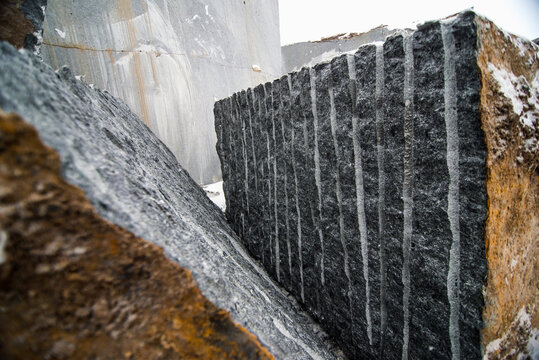A Trip With Granite Quarries in South Africa: Introduction Nature's Creativity
A Trip With Granite Quarries in South Africa: Introduction Nature's Creativity
Blog Article
Unveiling the Mysteries of Granite Quarrying: Where Stamina and Style Meet
The world of granite quarrying is a realm where the raw stamina of nature assembles with human virtuosity to create structures that stand the test of time with an air of sophistication. From the midsts of quarries to the thorough polishing in workshops, the process of transforming granite into architectural wonders is a complicated dancing of practice and innovation. As we peer into the depths of this ancient craft, we begin to discover the concealed details that form the really essence of our constructed setting.
The Beginnings of Granite Quarrying
In the record of building background, the beginnings of granite quarrying are shrouded in a tapestry of old workmanship and geological wonders. Going back to old Egypt and Mesopotamia, the removal of granite from quarries noted the beginning of a journey that would ultimately result in the development of a few of the world's most renowned structures.
Granite quarrying's roots can be traced to the skilled artisans that identified the rock's longevity and visual charm. With a combination of primitive tools and large resolution, these very early quarry workers unearthed granite blocks that would come to be the foundation of people.
As people developed, so did the techniques of quarrying granite. The Romans, renowned for their engineering expertise, established advanced methods for removing granite to build monuments, holy places, and roadways that stood the test of time.
The legacy of these old quarrying methods remains to form contemporary architecture, with granite continuing to be an icon of stamina and elegance in building and construction jobs around the globe. (granite quarries in south africa)
Devices of the Quarrying Trade
The evolution of granite quarrying strategies from ancient human beings to contemporary times highlights the crucial duty played by the devices of the quarrying trade in forming the industry's techniques. In ancient times, quarrying devices were simple, frequently including chisels, hammers, and wedges made from products like bronze or iron. These tools called for significant workforce and time to extract granite obstructs from quarries.

In addition, the intro of pneumatically-driven devices and high-powered machinery has substantially minimized the physical labor needed in quarrying operations, enhancing worker safety and security and performance. As the quarrying sector remains to innovate, the tools of the trade continue to be at the center of driving development and shaping the future of granite extraction.
Extracting Blocks of Granite
Utilizing accuracy review machinery and progressed techniques, the extraction of granite obstructs from quarries has actually ended up being an advanced process in the modern-day quarrying sector. The preliminary step involves recognizing the place and size of the granite down payment to establish one of the most efficient removal technique. Once a suitable website is chosen, the extraction procedure begins with the exploration of openings for the placement of nitroglycerins. Managed blasting strategies are then used to break apart the granite Website into workable sections.

Sprucing Up and Completing Techniques
To attain a perfect surface on granite blocks, knowledgeable craftsmens employ a collection of precise sprucing up and completing techniques. After the preliminary extraction and forming processes, the granite obstructs undergo a thorough sprucing up stage to improve their all-natural appeal and resilience. One usual method made use of in polishing granite is ruby abrasion, where industrial diamonds are made use of to grind and polish the rock to a smooth finish. This procedure not just creates a glossy surface however additionally makes sure harmony in color and structure throughout the granite block.
In addition to polishing, ending up strategies are applied to additional fine-tune the granite's look. These strategies may include flaming, refining, or cleaning, each offering one-of-a-kind textures and finishes to fit various visual choices. my sources Flaming, as an example, entails exposing the granite surface to heats to produce a rough, distinctive surface, perfect for exterior applications where slip-resistance is essential. Honing, on the other hand, offers a matte finish that is smooth to the touch, ideal for indoor counter tops and floor covering. By thoroughly selecting and applying these brightening and ending up techniques, artisans can transform raw granite blocks into splendid pieces that showcase both strength and beauty.

Ecological Effect and Sustainability
With the expanding emphasis on ecological consciousness in the market, granite quarrying techniques are progressively looked at for their impact on natural deposits and long-lasting sustainability. Quarrying for granite can have significant environmental effects. The extraction process usually involves using hefty machinery, dynamites, and huge quantities of water, resulting in environment devastation, soil erosion, and water contamination. In addition, the transportation of granite from quarries to processing facilities produces carbon exhausts, further contributing to ecological destruction. granite quarries in south africa.
To alleviate these influences and make certain sustainability in granite quarrying, sector stakeholders are taking on various measures. Implementing advanced technologies to decrease energy consumption and water usage, reclaiming quarried land for ecological restoration, and promoting responsible sourcing practices are some strategies being used. In addition, qualifications such as the Woodland Stewardship Council (FSC) and the Management in Energy and Environmental Design (LEED) help consumers recognize eco-friendly granite products.
Conclusion
In verdict, granite quarrying is a process that calls for specialized devices and techniques to remove blocks of granite and polish them to a high degree of finish. While the ecological impact of quarrying can be substantial, efforts are being made to boost sustainability methods in the sector. Generally, granite quarrying is a delicate balance in between utilizing the toughness and sophistication of this all-natural stone while decreasing its influence on the setting.
Report this page